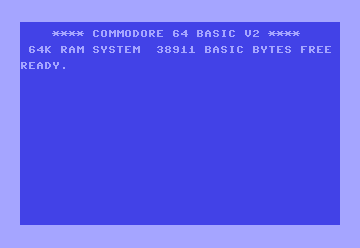
FOR: Your Repetition Wrangler
Tired of manually repeating the same lines of code over and over? Want to create loops that execute a specific number of times? Look no further than the FOR command! This trusty tool is your go-to solution for creating loops in your Commodore 64 programs. It's like having your own personal robot that can tirelessly perform repetitive tasks, freeing you up for more creative endeavors!
Syntax
FOR <counter> = <start> TO <end> [STEP <increment>]
... (code to repeat) ...
NEXT [<counter>]
Where:
- <counter>: A numeric variable that keeps track of the loop's progress.
- <start>: The initial value of the counter.
- <end>: The final value of the counter.
- STEP <increment>: Optional. The amount by which the counter is increased (or decreased) after each iteration. If omitted, the default is 1.
Applications
The FOR command is incredibly versatile and can be used for:
- Repeating actions a specific number of times: Perfect for drawing patterns, generating lists, or processing data.
- Iterating through arrays: Easily access and manipulate each element of an array.
- Creating timed delays: Use
FORloops to pause your program for a specified duration. - Building complex algorithms: Combine
FORloops with other control structures to create sophisticated programs.
Code Examples
1. Simple Counting Loop:
10 FOR I = 1 TO 5
20 PRINT I; :rem Output: 1 2 3 4 5
30 NEXT I
This classic example counts from 1 to 5, printing each number on the screen.
2. Processing an Array:
10 DIM A(4)
20 FOR I = 0 TO 4
30 A(I) = I * I
40 NEXT I
50 PRINT A(3) :rem Output: 9
Here, a FOR loop is used to fill an array A with the squares of numbers.
3. Nested Loops:
10 FOR I = 1 TO 3
20 FOR J = 1 TO 2
30 PRINT I; "*"; J; "="; I*J :rem Multiplication table for 1, 2, and 3
40 NEXT J
50 NEXT I
This example demonstrates how to nest FOR loops to create a simple multiplication table.
FOR in the Wild: The Pixel Artist's Palette
Imagine you're creating a drawing program for the Commodore 64. You could use nested FOR loops to iterate over the rows and columns of the screen, setting the color of each pixel individually to create intricate designs.
Don't be a slave to repetition! With the FOR command, you can automate repetitive tasks and add powerful looping capabilities to your Commodore 64 programs. It's like having a tireless assistant that can handle the boring stuff, leaving you free to focus on the creative aspects of your code. So unleash the power of FOR and let your loops run wild!
